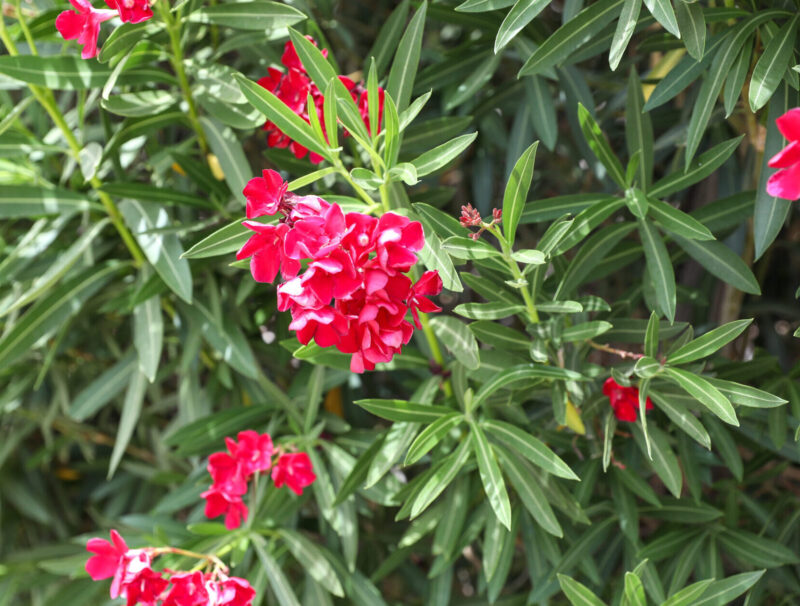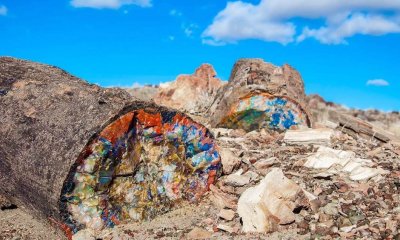Arizona
Very Few Know That This Common Arizona Plant is One of the Most Poisonous in the Country
Imagine strolling through the sunny streets of Arizona, soaking up the desert vibes and basking in the warmth of the sun. As you admire the native flora, you come across a plant with vibrant flowers and lush green leaves. It certainly looks like a sight to behold, right?
Well, hold your horses, because that seemingly innocuous plant goes by the name of Nerium oleander, and it’s not to be trifled with.
What’s the big deal with Nerium oleander? It’s just a plant.

Source: Elgin Nursery
Oh, how wrong you are, my friend! The Nerium oleander may look pretty, but beneath its colorful exterior lies a deadly secret. That’s right, this seemingly harmless shrub is one of the most poisonous plants in the country, and it’s not afraid to show it.
The Nerium oleander, also known simply as oleander, is a common sight in Arizona and other warm climates across the globe. With its showy clusters of pink, white, or red flowers, it’s no wonder this plant has found its way into gardens, parks, and landscapes everywhere (have you spotted these in the Phoenix urban area?) They’re really pretty! However, our warning remains the same! Don’t let its beauty fool you because this plant means business.
Every part of the oleander plant is packed with toxic compounds known as cardiac glycosides. These nasty little chemicals wreak havoc on the human body, causing symptoms ranging from nausea and vomiting to irregular heart rhythms and even death in severe cases. Yikes!
But wait, it gets worse

Source: Elgin Nursery
Not only is Nerium oleander poisonous to humans, but it’s also toxic to pets and livestock. If your dog decides to snack on a few oleander leaves, that’s a trip to the vet waiting to happen. You don’t want that!
Let’s not get started on the poor unsuspecting wildlife that may mistake this deadly plant for a tasty treat.
How exactly did a plant with such deadly properties become so widespread?
For starters, oleander is incredibly hardy and resilient, capable of thriving in a wide range of conditions. From scorching desert heat to freezing temperatures, this plant can tough it out like a true survivor. Plus, those eye-catching flowers make it a popular choice for landscaping and ornamental purposes—a fact that only adds to its deceptive allure.
With a little knowledge and caution, you can coexist peacefully with Nerium oleander without ending up in the emergency room. For good measure, familiarize yourself with the telltale signs of oleander poisoning and keep your distance from this toxic beauty. Be extra observant if you have pets or small children, and consider removing oleander from your garden altogether to avoid any potential mishaps.
It’s not all doom and gloom when it comes to the Nerium oleander

Source: Elgin Nursery
Despite its deadly reputation, this resilient plant has also been used for centuries in traditional medicine and folk remedies. In fact, it’s known for treating skin ailments to easing inflammation. Just don’t do any funny staff if you’re not knowledgeable. Remember, safety first!
The next time you find yourself admiring the flora of Arizona, remember to give oleander a wide berth. Sure, it may be beautiful to look at, but trust me, you don’t want to mess with this deadly desert dweller.
Stick to admiring it from a safe distance, and you’ll live to see another day in the wilds of Arizona.

















